MY MOTHER
MADE ME DEAF
MY MOTHER
MADE ME
DEAF
Discourse and Identity
in a Deaf Community
B RYAN K . E LDREDGE
Gallaudet University Press Washington, DC
Gallaudet University Press
Washington, DC 20002
http://gupress.gallaudet.edu
2017 by Gallaudet University
All rights reserved. Published 2017
Library of Congress Cataloging-in-Publication Data
Names: Eldredge, Bryan K., author.
Title: My mother made me deaf : discourse and identity in a deaf community / Bryan K. Eldredge.
Description: Washington : Gallaudet University Press, 2017.
Identifiers: LCCN 2016053048| ISBN 9781563686870 (hardback) | ISBN 9781563686887 (e-book)
Subjects: LCSH: DeafUnited StatesSocial conditions. | American Sign Language. | BISAC: SOCIAL SCIENCE / Anthropology / Cultural. | SOCIAL SCIENCE / People with Disabilities.
Classification: LCC HV2545 .E43 2017 | DDC 305.9/082dc23
LC record available at https://lccn.loc.gov/2016053048
 This paper meets the requirements of ANSI/NISO Z39.48-1992 (Permanence of Paper).
This paper meets the requirements of ANSI/NISO Z39.48-1992 (Permanence of Paper).
For Julie
C ONTENTS
M ANY PEOPLE have contributed to the creation of this book. Some, like my parents, siblings, and extended family, as well as my friends, have done so rather indirectly, offering support and shaping my thinking in ways unknown to them and for which I can never adequately thank them.
Other people have had a much more direct influence. As this work is based largely on the fieldwork I completed as part of my doctoral work at the University of Iowa, many of the faculty there, particularly the members of my dissertation committee, Laurie Graham, Douglas Baynton, Richard Hurtig, Mac Marshall, and Erica Prussing, as well as Nora England, provided significant insight and encouragement.
Without Laurie Grahams generous mentoring and friendship, this work simply could not exist. As my committee chair, Laurie possessed the ability to discern and dispel, or at least hold at bay, my own self-doubt, yet she knew just when to crack the whip, and she kept my focus on the discourse. It is also she who continually encouraged me to move my work from a dissertation to a book.
Douglas Baynton was not only a committee member but also a colleague and friend at the University of Iowa. We shared an office for a year. I learned so much from him that year, although I know my chattiness slowed his pace. He took it all in stride, and I thank him for that.
The Deaf community in Utah Valley played a significant role in this book. Their willingness to allow me to carry out my research among them is no small sacrifice, one for which I will always be grateful. But more importantly, I am so fortunate to consider many of these people as my friends. They have channeled my life in paths I could never have anticipated.
Of course, my wife Julie deserves the bulk of the credit for anything positive to come from this work. She introduced me to the D EAF- W ORLD , put me through school, and kicked me out the door on mornings when my own inhibitions threatened to thwart my fieldwork efforts. She has been my proofreader, my role model, my advocate, and my love. Together we have three hearing daughters whose impact goes beyond their patience, love, and support. They actually experienced my fieldwork as part of their everyday lives. My field notes contain numerous references to their interactions with the local Deaf community while I was doing my work. As of this writing, they are grown and have flown the nest, but they are all still actively engaged in the D EAF- W ORLD . Two of them are now professional interpreters, and one of them married another coda (child of deaf adults). The pictures in this text remind me of the wonderful kids they once were even as I see the wonderful young women they have become.
In closing, I need to thank my many colleagues here at Utah Valley University, at the University of Iowa, and from around the country and beyond. I have received feedback and instruction on various elements related to this work for many years. In turn, I have shared these with my students, whose impact on me and on the pages of this book should not be overlooked. A number of my students have been forced to read early versions of some of these chapters as part of their D EAF- W ORLD Discourse class. They have given me insights that I used to improve the final product. More important, I am grateful for the inspiration I get from watching them mature intellectually. The Aha! moments I witness are my greatest professional reward.
A final thank you goes to the incredible editing staff at Gallaudet University Press. Their corrections, comments, questions, and gentle guidance have greatly improved this work. Clearly this book is the product of many people, but ultimately I bear responsibility for its weaknesses. I hope that all of these people will be able to look past its flaws and feel pride for having played a part in its creation.
| SMALL CAPS | English glosses for ASL signs (meanings are similar but not exactly the same). |
| Italicized glosses | Glosses in italics represent signs produced with the nondominant hand. Their temporal relation to the action of the dominant hand is indicated by their vertical alignment with the line above them. |
| - (hyphen) | Phrases in which the glosses are connected with a hyphen(s) are expressed with a single sign (for example, TO-BE-ALONE and LONG-AGO ). |
| - (hyphen in | Hyphens between letters in fingerspelled words |
| fingerspelled words) | indicate deliberate, letter-by-letter fingerspelling. |
| PRO | Personal pronoun |
| POSS | Possessive pronoun |
| -1st or -3rd | Indicates direction/location of agreement; attached to either a pronoun or a verb, for example, PRO -1st, POSS -1st, or to-be-alone-1st. |
| -rt or -lf | Indicates direction/location (i.e., right or left); for example, PRO -1st-rt. |
| IX- | Indexing. The description of a location or an object indexed follows in single quotes as in upper right |
| INDEX | Indexing that points to the fingers of the nondominant hand. |
| [ ] | Marks information not explicitly included in the text that is provided for clarity. Also used for descriptions of particular sign forms. |
| (italics) | Italicized text in parentheses provides gestural and other contextual information, including eye gaze shifts, movement from one location to another, etc. May also indicate to whom talk is directed as well as information about role shifts and who is signing during these role shifts. |
| <> | Marks beginning and end of role shifts. |
| # | A fingerspelled loan sign (e.g., # BUS ). |
| fs- | A fully fingerspelled item. |
| Misspelling in a fingerspelled item. |
| ns- | Designates a name sign (e.g., ns- JULIE ). |
| * (asterisk) | Emphasis. |
| (alt.) | Movement alternates between hands. |
| (2h) | Sign is done (optionally) with two hands. |
| (1h) | Sign done with one hand when normally requires two. |
| (H1) | Dominant hand. |
| (H2) | Nondominant hand. |
| CL- | Classifier. |
| CL: | Classifier made with a bent handshape (e.g., CL:2sit). |
| ICL | Instrument classifier (e.g., spooning, stirring, and other forms of manipulation). |

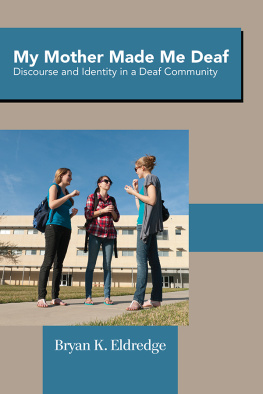
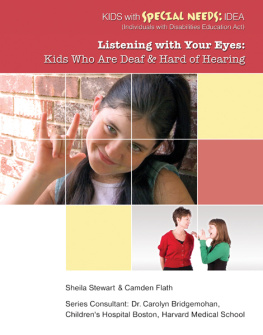
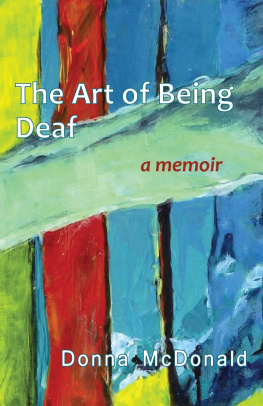
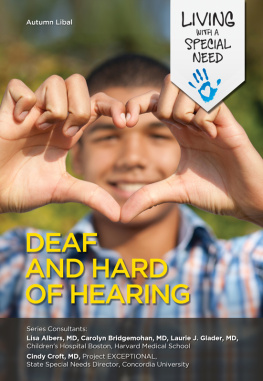
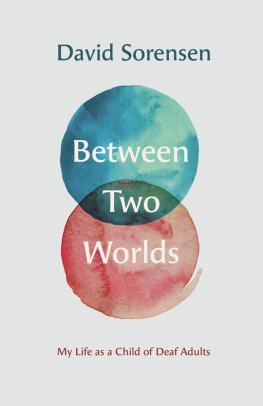
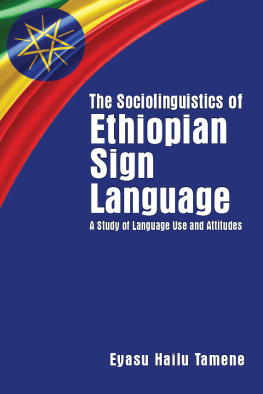
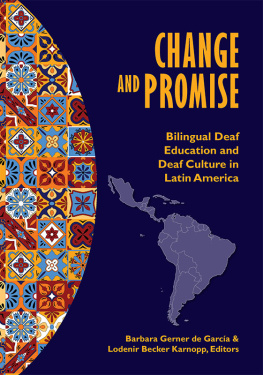
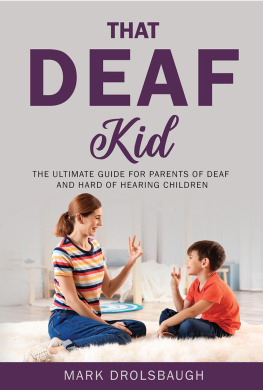

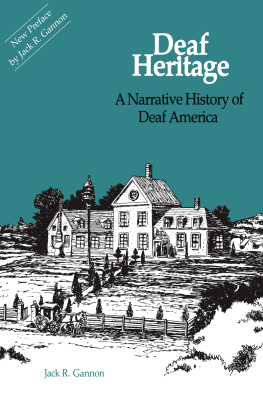
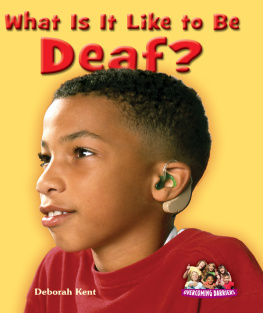
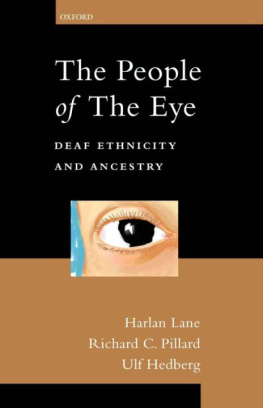

 This paper meets the requirements of ANSI/NISO Z39.48-1992 (Permanence of Paper).
This paper meets the requirements of ANSI/NISO Z39.48-1992 (Permanence of Paper).